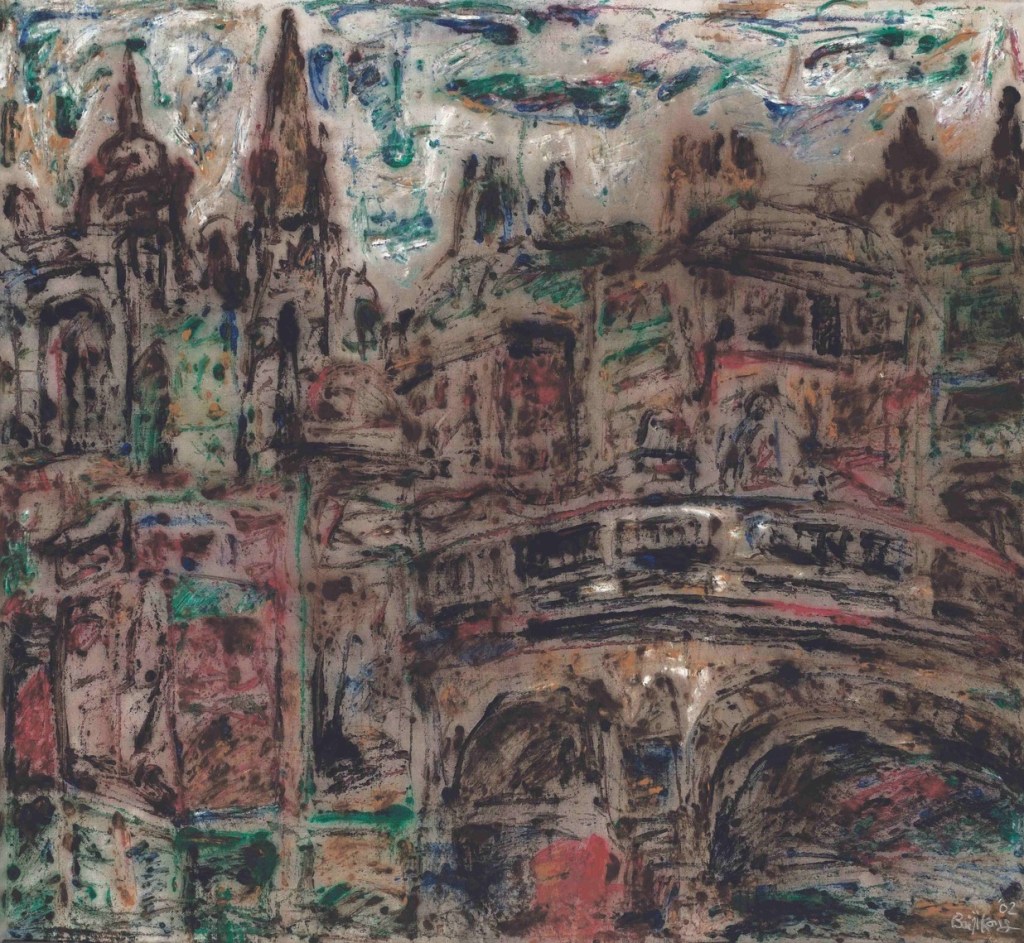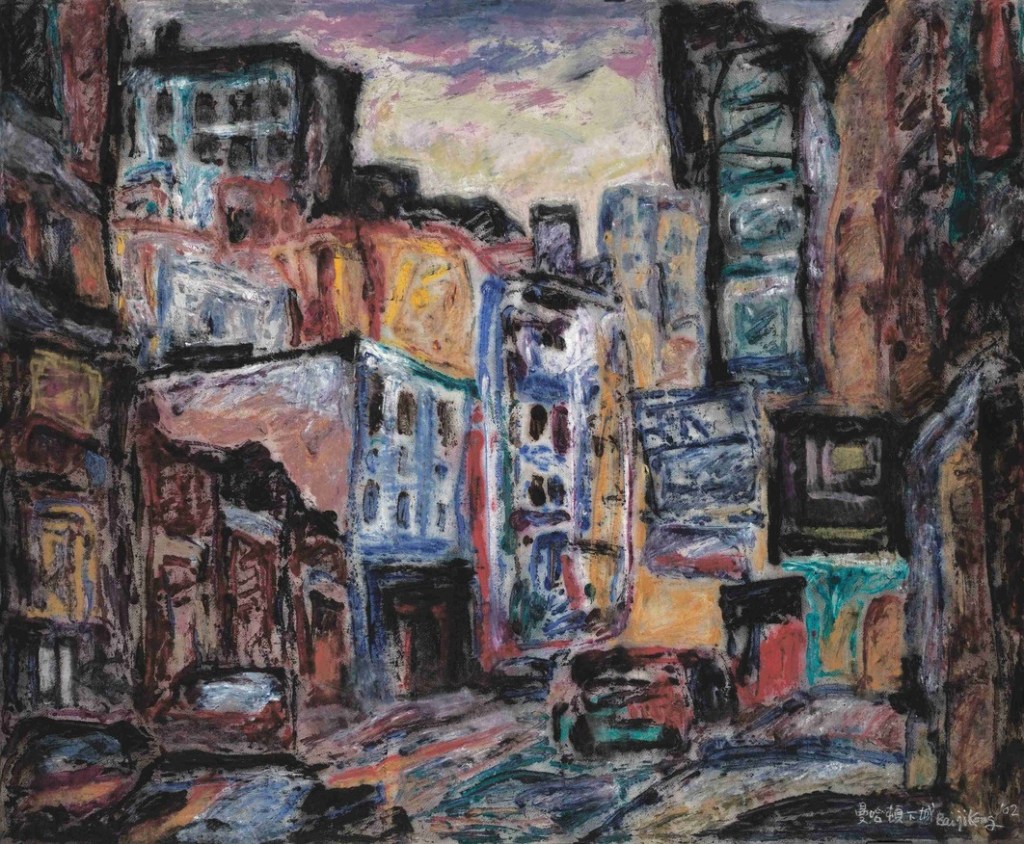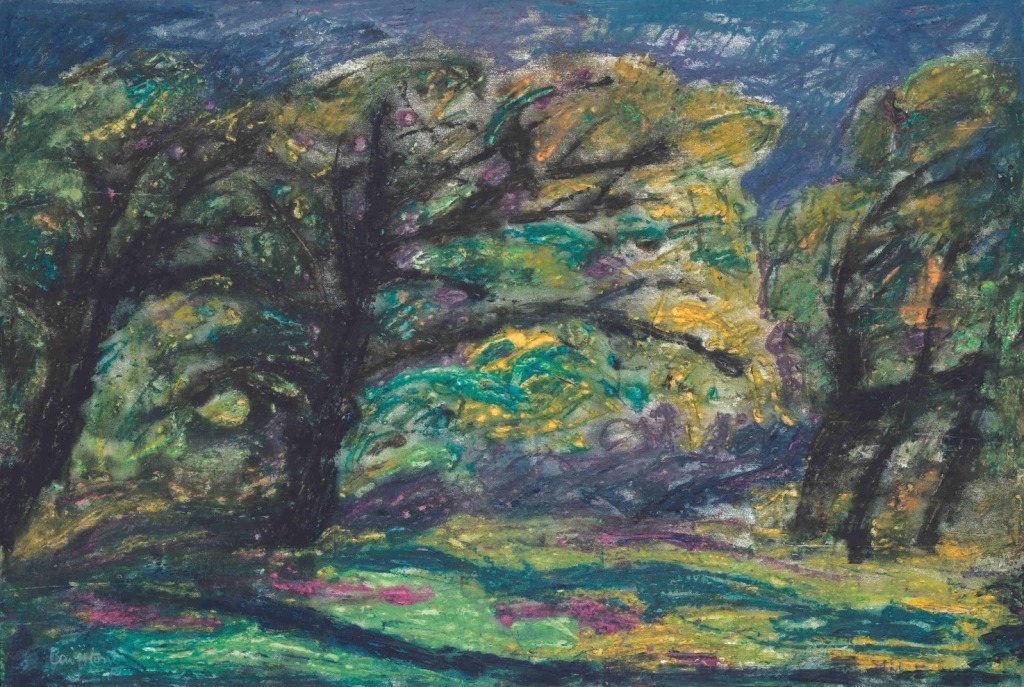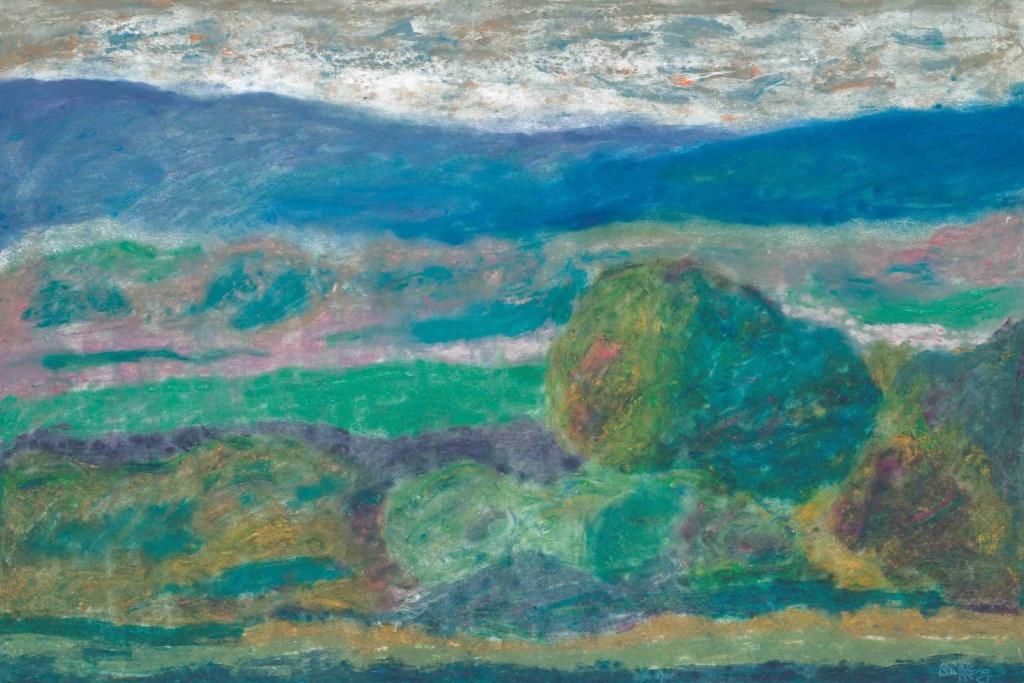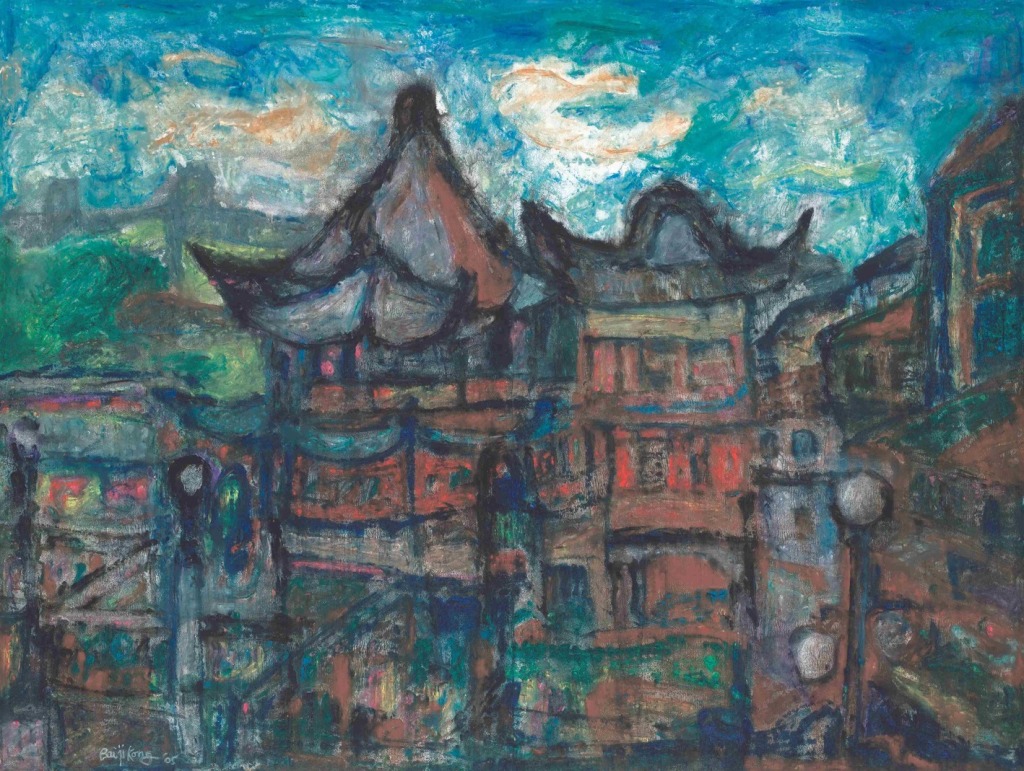Baiji Kong 孔柏基
“ To bind art east and west, it is not about the figurative but the spiritual. ”
— Baiji Kong

Baiji Kong, born in 1932 in Shangyu, Zhejiang, revolutionised oil painting by ingeniously blending traditional Chinese materials—xuan paper and oil pigments and creating the distinctive style of Xuan paper oil painting. This innovative art form garnered attention and was exhibited in over ten cities in Japan, becoming a transformative exhibition after China’s political reform. Renowned Japanese art critic Tomoyo Uemura hailed these works as portraying “human suffering, human hope, and human strength.”
Kong embarked on his artistic journey in Shanghai in 1946. His unconventional portrayal of peasant life faced a decade of challenges despite recognition from master artists like Xu Beihong.
In 1979 and 1989, Kong studied Buddhist cave murals in Dunhuang, while this experience profoundly impacted his art. His meticulous reinterpretations made on Xuan paper, employing impressionist colors and expressionist contours, conveyed emotions akin to dreams. His 1980 solo exhibition, “Impressions of Dunhuang,” captivated global audiences, resonating with the suffering and hope of ancient painters.
Settling in the U.S. in 1986, Kong continued to integrate Western elements into his art. In 1988, Harvard University hosted one of his initial U.S. exhibitions. He passed away in Connecticut in March 2018, leaving an indelible legacy that transcends cultural boundaries.

